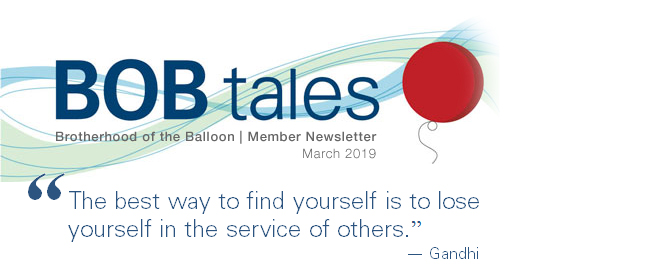
Dear Members (a note from Deb Hickey):
I felt a little guilty for thinking it, and then I actually said it out loud—“I’d give anything to be at the Patriot’s parade.” Instead of joining the mob scene at the (6th) New England Patriots Super Bowl victory parade in downtown Boston (just 30 minutes from my house), I was driving to the local CVS to pick up medicine for my daughter who’d just been diagnosed with the flu. It was an uncommonly warm Tuesday morning in early February; the sun was shining; and I was going to spend the afternoon on the sofa holding a bucket.
Fifteen minutes later, I was parked at my daughter’s feet as she laid on the couch, wrapped up like a burrito in her Shopkins blanket, her phlegmy snore permeating the living room. I set my laptop on the ottoman in front of me. I’ll probably be here all day, I thought. So, I may as well be productive; I’ll work on my upcoming presentation.
Right after the New Year, I’d been asked to speak at the 2019 National Association for Proton Therapy Conference in Miami which is scheduled for March. I was honored to have been asked—this will be my second time presenting. Last year, I spoke on a panel titled, “Advocating for Proton Therapy” at the conference in Arizona. This year, I’ll be speaking on a panel titled, “Patients as Advisors and Partners.” I’ll be talking about the BOB organization—how and why we got started; our mission to inform, educate, and connect former, current, and prospective prostate cancer proton therapy patients; and how our group has evolved over the past 18 years.
Every time I hear from a newly diagnosed man (or his significant other―and sometimes his son or daughter), I take a minute and think: How can I quickly and clearly give him the information he needs? How can I calm his fears? How can I best utilize the BOB―10,000 people in the same shoes—to help him navigate this confusing and frightening journey? What would I need if I were in his shoes?
If he’s read Bob’s book, he already knows a lot about the treatment options; the pros and cons of each; and he knows about proton therapy―the option Bob chose and feels so passionately about.
If he’s been recently referred to the BOB by a friend or he’s come across our website while looking for alternative treatment options, he may be skeptical. He may also have a lot of questions about proton versus other treatment modalities; and he may need a lot more detailed information.
All the men who reach out to us like to discuss their specific diagnosis―staging, age, other health issues, and their fears. I remind them that I’m not a physician and cannot give medical advice, but I can tell them about our members. I lead them to case histories and I send them a list of former proton patients who have all volunteered to be contacted and share their treatment experiences and outcomes. While I also typically communicate with these men and answer their questions in numerous back-and-forth email exchanges and sometimes by phone, I also encourage them to spend time on our website learning more about proton therapy; and I send them articles that may be helpful to them. And the message I include in every email to newly diagnosed men is this:
You would be wise to speak with former patients. In fact, we recommend you speak with at least ten former patients representing each treatment option you are considering.
I tell them that speaking with former patients is where they’ll get their best education.
Those who contact us are always grateful for the information we provide; I can always sense the calmness that comes over them once they learn that prostate cancer is not a death sentence. They learn that tens of thousands have made their journey through proton therapy; and the overwhelming majority of them have done just fine.
That’s what the BOB is all about. And that’s part of the message I hope to convey when I speak at the NAPT conference next month.
This month’s BOB Tales has a little something for everyone. Another proton center has opened in the U.S.; cancer deaths are dropping; cancer gene identification may help doctors “switch-off” the disease; advances in prostate biopsies are reviewed; potential causes of aggressive prostate cancers are examined; a tropical fruit may help fight prostate cancer; one major insurer is loosening its restrictions on coverage for proton therapy; your cholesterol meds may be helping to protect against a recurrence; member feedback on our commentary on Dr. James Slater’s passing has been overwhelming; and much more.
Deb Hickey
As always, we welcome and appreciate your feedback on our newsletter. Just send an email to [email protected].
To print the BOB Tales newsletter or view the newsletter with a larger font size, click here for the PDF file.
In this Issue:
- 30 Proton Centers in U.S.
- U.S. Cancer Death Rate Drops 27 Percent in 25 Years
- Gene Responsible for Prostate Cancer Spread Identified
- A Much Safer Prostate Biopsy Method?
- Does Higher Calcium Intake = More Aggressive Prostate Cancer?
- NCI Awards $1.7 Million to Research Mangosteen for Prostate Cancer
- Good News from United Healthcare on
Proton Therapy Coverage - Long-term Statin Use Protects Against Prostate Cancer Death
- New Study: PSA Screenings Reduce Prostate Cancer Death by 30 Percent
- Gleason Score May Underestimate Mortality Risk in Black Men
- New Research Says Sugar Supplement Can Slow Cancer Growth
- Smoking Tied to More Aggressive Prostate Cancer

30 Proton Centers in U.S.
As reported by the National Association for Proton Therapy during our February member conference call, there are now 30 proton centers in the U.S.
It took 25 years for the first 15 proton centers to be built and started-up in the U.S. But it took just four years for the next 15 to come on line. Last month the University of Oklahoma treated its first patient at the Stephenson Cancer Center in Oklahoma City. The single-room treatment facility is planning to treat brain tumors, head-and-neck tumors, abdominal tumors (e.g. pancreatic cancer), rare neural tumors, localized prostate cancer, and tumors in pediatric patients.
U.S. Cancer Death Rate Drops 27 Percent in 25 Years
According to the annual “Facts & Figures” 2019 report from the American Cancer Society, as of 2016 the cancer death rate for men and women combined decreased 27 percent from its peak in 1991. This decline translates to more than 2.6 million lives spared during that span of time. The drop is mostly due to reductions in smoking and advances in early detection and treatment.
Major Cancer Types
The most common cancers diagnosed in men—prostate, lung, and colorectal—account for 42 percent of all cases in men, with prostate cancer alone accounting for nearly one in five new cases. The most common cancers diagnosed in women—breast, lung, and colorectal—account for one-half of all cases, with breast cancer alone accounting for 30 percent of new cases. These cancers account for the greatest number of cancer deaths.
Results Differ Among Racial/Ethnic Groups
The rates of new cancer cases and cancer deaths vary among racial and ethnic groups. The rates are highest among African Americans and lowest for Asian Americans. These racial and ethnic differences reflect factors related to socioeconomic status. People living in poorer areas in the U.S. are more likely to smoke and be obese. Those living in poverty are also less likely to get screened and to access the best treatment options.
Special Section for Ages 85+
Each year, the ACS includes a special section in their report that highlights an issue of cancer research or care. This year, the topic is the “oldest old,” adults ages 85 and older. This is the fastest-growing population group in the U.S. The section provides information on incidence and mortality rates and trends, survival, treatment, and the unique challenges affecting older patients.
Gene Responsible for Prostate Cancer Spread Identified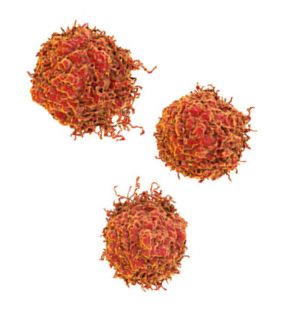
Scientists at Rutgers University have identified the NSD2 gene that seems to be the trigger to rapid spreading of the disease. This gene could be used as a drug target for prevention of disease advancement, according to researchers. The gene was identified through a computer algorithm when studying prostate cancer disease progression in mice and was reported in Drug Target Review.
When researchers “switched off” the gene in the mouse’s tumor cells, it dramatically decreased the spread of cancer. Scientists are attempting to develop a drug to target NSD2 and are recommending that doctors screen prostate cancer patients for the presence of this gene.
The study was published in the Journal of Nature Communications.
A Much Safer Prostate Biopsy Method?
The most common method for conducting prostate biopsies is to pass a needle through the rectal wall into the prostate several times, removing tissue samples for analysis. This procedure can allow bacteria in the bowel to get into the urinary system and bloodstream.
Statistics show that up to 12 percent of men develop infections from this procedure and for one in 50 it can be life-threatening.
An article published in Daily Mail reported on a new and safer method for doing prostate biopsies. This method involves passing the biopsy needle through the perineum (the space between the scrotum and the anus) and into the prostate; it avoids the rectum and allows better sampling of all parts of the prostate, including the anterior section. You can see, schematically, the difference between the two methods here.
Although this procedure is reported in the Daily Mail to be new, it has been used in some medical centers for a few years. We wouldn’t be surprised if the perineal method becomes more and more popular over time, given the benefits to the patient.
Does Higher Calcium Intake = More Aggressive Prostate Cancer?
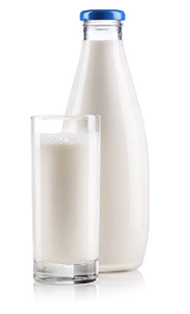 A recent study looked at the association between daily intake of calcium and magnesium and high-aggressive prostate cancer. The results were published in the American Journal of Clinical Nutrition.
A recent study looked at the association between daily intake of calcium and magnesium and high-aggressive prostate cancer. The results were published in the American Journal of Clinical Nutrition.
Much has been written about the association of dairy products and prostate cancer, but the data from past studies are inconsistent, ranging from a slight inverse relationship to a positive relationship. However, there has been a consistent association between calcium intake and prostate cancer. Researchers believe this may be due to calcium causing suppression of the biologically active form of vitamin D, which is dihydroxyvitamin D. Dr. Charles “Snuffy” Myers, noted prostate cancer expert, has written about this for years, and he encourages his patients to maintain their vitamin D levels in the top half of the normal range.
Magnesium is reported to regulate glucose metabolism, inflammation and cell proliferation, and half of the U.S. population consumes less than the recommended daily intake of magnesium.
This recent study hypothesized that the relationship between calcium and magnesium consumption may have a stronger association with prostate cancer risk than originally thought. So, researchers investigated this association along with dietary intake of dairy products while looking at prostate cancer aggressiveness in 2,000 African-American and European-American men ages 40 – 79, all with aggressive prostate cancer.
Results showed that overweight African American men who smoked, with diets including higher saturated fat and alcohol intake, were more likely to be diagnosed with high-aggressive prostate cancer. African-Americans also showed a positive association between calcium-to-magnesium ratio and the incidence of high-aggressive prostate cancer.
European-Americans with high-aggressive prostate cancer tended to have a higher daily intake of either dietary or supplemental calcium and milk as well as total dairy. They also had a higher calcium-to-magnesium ratio than those with low- and intermediate-risk prostate cancer. In fact, men with a high intake of whole milk were reported to have a 74 percent greater risk of high-aggressive prostate cancer versus men who drank low-fat milk.
In both groups, those with higher calcium-to-magnesium and whole milk intake showed an increased risk of high-aggressive prostate cancer.
NCI Awards $1.7 Million to Research Mangosteen for Prostate Cancer 
A $1.7 million grant from the National Cancer Institute will fund a project at the University of Illinois to study the use of mangosteen for treating prostate cancer.
Mangosteen is a tropical evergreen that grows mainly in Southeast Asia and other tropical climates. The fruit from this
tree is sweet and tangy. Medical healers in Southeast Asia have used mangosteen fruit to treat skin infections, dysentery, urinary tract infections, and other medical conditions.
Xanthone antioxidants in mangosteen promote androgen receptor degradation, according to researchers, and this could help deal with drug resistance to commonly used FDA-approved drugs used for treating prostate cancer.
Mangosteen can be found in the U.S. in some Asian grocery stores or purchased online as fresh fruit or in extract form.
Good News from United Healthcare on Proton Therapy Coverage
There appears to be some good news from United Healthcare on paying for proton therapy for prostate cancer. Their new policy released in December, includes a significant change: Prostate cancer has been removed from the “unproven and not medically necessary” indication list and was addressed in their new policy with the following language:
PBT (Proton Beam Therapy) and IMRT are proven and considered clinically equivalent for treating prostate cancer. Medical necessity will be determined based on the terms of the member’s benefit plan.
This does not necessarily mean that anyone with UHC insurance will automatically be covered if they choose proton therapy, but it certainly looks like your chances of being covered by UHC are significantly improved with this policy change.
This change was reported by Scott Warwick, executive director of the National Association for Proton Therapy at our monthly conference call in January.
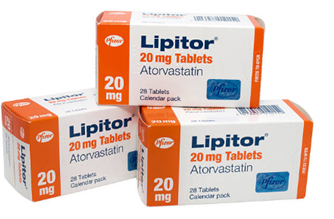 Long-term Statin Use Protects Against Prostate Cancer Death
Long-term Statin Use Protects Against Prostate Cancer Death
Statins are cholesterol-lowering drugs like Atorvastatin, Simvastatin, Rosuvastatin, Pravastatin, and Lovastatin. More recognizable common names of these drugs are Lipitor, Zocor, Crestor, Pravacol, and Mevacor.
Dr. Charles “Snuffy” Myers, world-renowned prostate cancer treatment expert and prostate cancer survivor, publishes a monthly newsletter, Prostatepedia. In his February 2017 issue, he devoted much attention to cardiovascular disease, statins, and prostate cancer. We covered the article in our April 2017 BOB Tales newsletter. We are discussing the use of statins again because newer studies seem to confirm earlier beliefs that statins may protect against aggressive prostate cancer.
A new study from the University of Michigan School of Public Health reports that long-term statin use (more than 10 years) can reduce the odds of a prostate cancer death. Rather than focusing on slow-growing, indolent prostate cancers, the researchers’ goal with this study was to look specifically at whether statins protect against fatal prostate cancers.
How Researchers Got Their Data
Researchers needed a dataset with an adequate duration of follow-up, so they used the Atherosclerosis Risk in Communities Study (ARIC) which was launched in 1985. The study enrolled nearly 16,000 men and women between the ages of 45 and 64, and monitored their heart disease results until 2016. The team from Michigan focused on 6,518 men from the ARIC cohort who had enrolled between 1990 and 1992—the beginning of the statin era. Approximately 25 percent of those men were African Americans, and none of them had prostate cancer when they entered the study.
What Researchers Learned
Men who used statins for more than 10 years were 32 percent less likely to be diagnosed with prostate cancer and 33 percent less likely to develop fatal prostate cancer. The protective benefits were similar among both white and African-American men.
Researchers aren’t certain why statins and other lipid-lowering drugs may protect against prostate cancer. The study’s lead author, cancer epidemiologist Alison Mondul, says evidence suggests accumulating lipids in cancer cells trigger altered, pro-tumor signaling. “Statins are also anti-inflammatory, and inflammation is a cancer hallmark,” she says.
While more research is needed, Mondul suggests men not take statins (which can induce side effects including headache, drowsiness, insomnia, and muscle aches) solely to guard against prostate cancer. “But if men choose to take a statin for cardiovascular benefits, then they should feel good about influencing their prostate cancer risk in a positive way,” she says.
New Study: PSA Screenings Reduce Prostate Cancer Death by 30 Percent
According to a new study by researchers at the University of Gothenburg in Sweden, PSA screenings have reduced prostate cancer deaths by about 30 percent. The report pushes back against a recommendation from Swedish officials that health providers should not screen for prostate cancer by itself due to overdiagnosis and overtreatment of prostate cancer.
According to Swedish researchers, more than three-quarters of all cancer cases could have been detected, and some deaths may have been prevented “if fewer than half of all men in the cohort had been offered additional testing or diagnostics.”
This research was based on data from 20,000 men monitored for more than two decades. The men’s initial PSA results proved highly significant as a predictor of future cancer risk.

Gleason Score May Underestimate Mortality Risk in Black Men
Black men diagnosed with low-risk prostate cancer may actually have a more aggressive form of the disease than nonblack men placed in the same prognostic category, a new study suggests.
The study, led by a scientist at the Dana-Farber Cancer Institute, analyzed databases of hundreds of thousands of men with prostate cancer. Gleason scores ranged from 6 to 10; however the study focused on men with Gleason 6 cancer, considered low-risk with a favorable prognosis.
“Data suggest that African-American men who have surgery for Gleason 6 cancers are more likely to have more aggressive surgical features than predicted prior to surgery than nonblack men having surgery,” said Brandon Mahal, MD, of the Department of Radiation Oncology at Dana-Farber and first author of the report. “The reasons are likely multifactorial,” he said. “It could be that Gleason 6 cancer in black men is inherently more aggressive or it may have to do with other non-tumor related factors such as how we perform the biopsies—maybe we’re undersampling their tumors and missing more aggressive disease—and lastly there could be other socioeconomic or access-to-care factors that drive differences.”
The researchers also analyzed a larger cohort of 62,736 black and 340,286 nonblack men followed for a longer period of time. The 12-year prostate cancer mortality rate in patients with Gleason scores 7 to 10 was 5.5 percent in black men versus 5.3 percent in nonblacks. Interestingly, a disparity again appeared in Gleason 6 prostate cancers: the 12-year mortality rate was 2.2 percent in black men versus 1.4 percent in nonblacks. The study’s authors agree this difference “supports the hypothesis that low-grade prostate cancer may be distinct in black men.”

Member Feedback: Remembering Dr. James Slater
Last month, we announced the passing of Dr. James Slater, the pioneer of hospital-based proton therapy. We were flooded with messages of sympathy. Following are excerpts from some of the many touching emails we received.
My deepest respect and thanks go to Dr. Slater. My prostate cancer was cured by proton therapy and I consider him an angel sent from God. I wish to send my condolences to his family and colleagues. —BOB member, Fremont, CA, treated at Loma Linda in 2012
I’m so saddened to learn of Dr. James Slater’s passing. He was a true hero to all of us who were privileged to receive proton therapy for our prostate cancer because of his perseverance and innovation—even if we weren’t treated at his Loma Linda proton center. He’s also a hero to thousands of men, women and children who will be treated and cured with proton therapy in the future. —BOB member, Prescott, AZ, treated at Mayo Clinic in 2014
Your stories in the February BOB Tales about Dr. Slater were beautiful. He will undoubtedly be remembered for his genius as well as his kindness. Heaven has gained an amazing angel. —BOB member, Las Vegas, NV, treated at Loma Linda in 2009
I read your latest newsletter with sadness and renewed admiration for Dr. James Slater. Many of us owe our health and quality of life to his work. The BOB Tales continues to be so well done—I read it with interest each time … My memories of Loma Linda will never go away … Several times a year I recommend Bob’s book and often the person already has it … It gives me pleasure to talk with guys who call me from your patient reference list. —BOB member, Marana, AZ, treated at Loma Linda in 2004
RIP Dr. Slater. And thank you. You are a true hero to all prostate cancer survivors treated with proton therapy. —BOB member, Dumont, NJ, treated at ProCure Proton Therapy Center, NJ in 2014
I’d like to send my condolences to Dr. Slater’s family and numerous friends at Loma Linda. My husband and I were honored to meet him and his son, Dr. Jerry Slater, at several Loma Linda events. —Spouse of Deceased BOB Member, Carlsbad, CA, treated at Loma Linda in 2000
THANK YOU, “JIM!” —BOB member, Loudon, TN, treated at UF Health Proton Therapy Institute in 2012
I read your latest newsletter with deep sadness and a heavy heart. I, like many others, owe my very life to the genius who was Dr. James Slater. He was a rare breed. —BOB member, Billerica, MA, treated at Loma Linda in 2017

We have been producing BOB Tales newsletters monthly for more than 18 years. During this time there have been important articles that many new members have not seen, and some older members may have forgotten. So, we decided to periodically re-run some articles from past newsletters. This one is from January 2005. It was posted prior to Deb’s joining the team, when all the articles were written by Bob. Here is an excerpt from, “The Other Centennial.”
The Other Centennial
I’ve had more fun with this than a kid with a new toy. About a month ago, I sent a note to our members indicating that, “In addition to 2005’s being the centennial year for Loma Linda University Medical Center and the 15th anniversary of the proton treatment center, it’s also the centennial of another event that’s of particular importance to those of us who are members of the “majestic and prestigious Brotherhood of the Balloon.” I wonder if any of you can guess what it is.
That question precipitated a firestorm of responses from members—mostly wrong answers. My email system has been overloaded with guesses. Some were quite good; and some, quite funny.
Here are a few of the hundreds I received:
- Is it the 100th anniversary of the invention of the balloon?
- Einstein’s Theory of Relativity?
- Discovery of the proton?
- Vacuum tube diode invented by Fleming?
- The birth of Oppenheimer?
- “Lorentz transformation” (of bodies moving at speeds close to that of light) first proposed?
- Ernest Rutherford’s discovery of radioactivity?
- Cy Young’s perfect game?
- Louis Cartie invented the first wristwatch?
- Albert Einstein describes “Brownian motion” of particles suspended in a liquid?
- Ice cream cones were first served?
- Theodore Roosevelt was elected president?
- Opening of the New York subway?
- Iced tea first introduced at the St. Louis World Fair?
- Pavlov receives Nobel Prize for discovery of conditioned reflexes?
- Peter Pan opened in the Duke of York’s Theatre in London?
- Start of construction of the Panama Canal?
- Woman arrested in NYC for smoking a cigarette in an open car on Fifth Avenue?
- Banana split was invented in Latrobe, PA?
- Helen Keller, first deaf and blind person to graduate from college?
- And dozens more, including some that can’t be printed here.
One member made a few wrong guesses and then he got rather creative. He emailed me and said, “If I contribute $1,000 to the James Slater Chair, will you give me a hint?” And you bet I did.
Incidentally, I gave three more hints along the way:
- It is not the 100th anniversary of Dr. Lynn Martell’s birth.
- If you stop and think, you should be able to come up with the answer.
- It’s something we can all brag about.
One member got the prize for the most guesses, but unfortunately none were right. The wife of another member came close in number of guesses, and her email made me laugh: “You are driving John and me NUTS!!!!! We have checked the Internet for the history of balloons, latex, rubber, first prostatectomy, radiation therapy etc. When will you reveal the answer?”
Well, here’s the answer.
It was brought to my attention by one of our members, who was Acting Chairman and Professor of Physics at the University of Idaho, that 2005 was the 100th anniversary of the discovery of the Bragg Peak.
As our informed and highly educated members all know, conventional X-ray radiation does a good job killing cancer, but it doesn’t stop at the tumor—it keeps going and passes through the body. The heavy, charged proton particle, on the other hand, stops right where it’s supposed to and doesn’t pass through the body damaging healthy tissue as it exits. This phenomenon of stopping and releasing the bulk of its energy on the target when passing though matter was discovered by Dr. W. H. Bragg, in 1905.
Dr. Bragg, Elder Professor for Mathematics and Physics in the University of Adelaide, Australia, presented his discovery that was eventually called the “Bragg peak,” to the Royal Society of South Australia. The paper describing this research was published in September 1905. W. H. Bragg was born in Westward (Cumberland, England) in 1862 and died in London in 1942. He was professor of physics in Adelaide (Australia) from 1886-1909, then in Leeds (England), and since 1915 in London. In 1915, he won the Nobel Prize for physics together with his son. However, he didn’t receive the prize for his discovery of the Bragg peak; he got it for studying the diffraction of X-rays in crystals. Now go back up and look at hints 2 and 3.
And the winner is … Within 30 minutes of each other, I heard from two members who guessed the correct answer. One was the late Phil Livdahl, who was the chief physicist on the Loma Linda proton treatment center project, and interestingly, the first prostate cancer patient treated with protons at Loma Linda back in 1990. The other was the gentleman who made the gift to the Dr. James Slater Chair. No prizes were awarded, just Bragg-ing rights.

Record High Year-End Giving Amount
As we’ve mentioned previously, we receive a montly list of members who have made contributions to the Robert Marckini Chair for Proton Therapy Research or Loma Linda University Health’s Vision 2020 campaign. We don’t know the amounts given individually, but we’re given the total monthly contribution. The December 2018 report was a record high. We are thrilled and thankful! The only downside is we have a real challenge for December 2019 if we want to keep this trend going.
Each month, we make every attempt to get in touch with everyone on these lists to thank them for their generosity. Bob and Deb just finished reaching out to everyone who contributed in November and we’re in the midst of calling those who made the 2018 year-end contributions. Following are some excerpts from recent conversations:
Bob’s book was a major factor in my decision to receive proton therapy at Loma Linda. My treatment experience was extraordinary. I especially appreciated the atmosphere at the proton center—every day that I walked in, I felt compassion … Today, my PSA is low and I feel great …
At this stage of my life, I feel it’s time to do more for others … I read the BOB Tales newsletter every month and truly enjoy it. I don’t know how two people can put out such a comprehensive newsletter every month.
Bob Marckini helped me understand proton therapy when I was comparing treatment options back in 2008 … My treatment experience was excellent … I love the BOB newsletter and read it every month.
[BOB member from Vermont] introduced me to proton therapy in 2002 … I had a wonderful experience of treatment … My PSA is low and I recommend proton therapy to friends and acquaintances … I appreciate my membership with the BOB and read your newsletter faithfully … I’d like to volunteer to be on your patient reference list to help newly diagnosed men learn more about proton therapy … I have also placed Loma Linda University Health in my estate plan.
What is a Chair?
“Chair” is the term used to describe an endowment that provides a steady stream of income to fund the work of research scientists. Loma Linda doesn’t receive sufficient revenue from patient care to fund their research—life-saving research is dependent upon the generosity of individuals. With funded chairs, the organization is able to attract and retain some of the best researchers, and scientists are able to dedicate all of their time to research. A minimum of $2.5 million is needed to fund a chair to support one researcher.
The Marckini Chair
The Robert J. Marckini Endowed Chair was established in 2013 through a generous gift from BOB member Chuck Kubicki. Since then, members have regularly contributed to the chair. The Chair is funded at about $3 million and is supporting important research at LLUCC. Some of the research the Marckini Chair supports includes:
- New tumor treatment sites
- Treating new histologic subtypes of cancer
- Breast cancer treatment
- Arteriovenous malformation of the brain
- Hypofractionation treatment of prostate cancer
- Active beam scanning for more precise targeting of certain tumors
- Treating atrial fibrillation of the heart
- Treating neurological pain from war veteran amputees
- Other clinical trials including esophageal cancer, advanced liver cancer, pancreatic cancer, and soft tissue sarcoma
How to Give to Proton Therapy Research
- Donate Online: Visit the LLUCC website.
- Send a Check: Make it out to “LLUCC Proton” with “Marckini Chair” on the memo line and send to: LLUH, Office of Philanthropy, P.O. Box 2000, Loma Linda, CA 92354.
- Make a Call: Contact Regina Joseph at 909-558-5010.
How to Give to Vision 2020
- Donate online: Visit the LLUH website.
- Send a check: Make it out to: “LLUH Vision 2020.” Mail to: LLUH, Office of Philanthropy, P.O. Box 2000, Loma Linda, CA 92354.
- Make a call: Call 909-651-2020.
How to Make a Future Gift
- Make a future gift: Contact Todd Mekelburg at the Office of Planned Giving at Loma Linda University Health at 909-558-5376 or [email protected].

2019 National Proton Conference: Miami, FL
The National Association for Proton Therapy (NAPT) is the voice of the proton community. The organization provides education and awareness for the public, professional, and governmental communities. Join NAPT for the 2019 National Proton Conference March 24 - 27, 2019, at The Biltmore Miami-Coral Gables in Coral Gables, FL. Attendees will include physicians, nurses, therapists, patients, proton therapy directors, and managers.
Keynote Speaker: President of the American Medical Association
Dr. Barbara L. McAneny, President of the American Medical Association, is a board-certified medical oncologist/hematologist from Albuquerque, NM. In June 2018, she became the 173rd president of the American Medical Association. She has been a member of the AMA Board of Trustees and is also the founder and current chairman of the board of the National Cancer Care Alliance. Dr. McAney will be the first to address the crowd on Monday morning, March 25, following an introduction from Vickie Miller, National Association for Proton Therapy Board Chairman.
Just Announced—Second Keynote Speaker: US Sen. Marco Rubio
Sen. Marco Rubio (R-FL), an attorney and supporter of proton therapy, also plans to address the crowd Monday morning. Deb Hickey, who will be attending the conference again this year, is honored and excited to see Sen. Rubio speak. We will include highlights from both presentations following the conference.
Deb Hickey to Speak on Panel
Deb was honored to be invited to speak on a panel again. This year, she will take part in the panel, “Patients as Advisors and Partners,” along with a representative from the University of Pennsylvania Roberts Proton Therapy Center and one of their former patients.


New Research Says Sugar Supplement Can Slow Cancer Growth
 In November 2018, researchers at Glasgow University reported they have found evidence that sugar supplement, mannose, can slow the growth of several cancers, including ovarian, kidney, breast, bowel, and prostate cancer.
In November 2018, researchers at Glasgow University reported they have found evidence that sugar supplement, mannose, can slow the growth of several cancers, including ovarian, kidney, breast, bowel, and prostate cancer.
Mannose has been shown to both slow the growth of certain cancers and also, when used in conjunction with chemotherapy, improve the results of treatment.
To date, all research has been done on mice, but plans are under way to begin clinical trials on humans.
Mannos is found in fruits such as peaches, pineapples, apples, oranges, cranberries and blueberries. It is also produced in some cells in our bodies. Its structure is similar to glucose.
Researchers are careful to point out that this is not a cure and that patients should not self-prescribe mannose. Human trials could take years to confirm the findings found in mice, and researchers are hopeful the trials will confirm early findings.
Smoking Tied to More Aggressive Prostate Cancer
 In addition to raising your risk of heart and lung disease, as well as cancers of the bladder and kidney, new research reveals smoking may increase your odds of developing metastatic prostate cancer.
In addition to raising your risk of heart and lung disease, as well as cancers of the bladder and kidney, new research reveals smoking may increase your odds of developing metastatic prostate cancer.
Evidence linking tobacco use with prostate cancer isn’t as strong as it is for other smoking-related diseases. Research from 2014 showed that smokers have a 24 percent higher risk of death from prostate cancer than nonsmokers, but it didn’t answer the question: Did the men who died from these other causes also have high-grade prostate cancers that hadn’t been detected? Experts suspected that since smoking kills in different ways, some may not live long enough to die from prostate cancer.
To investigate further, Austrian researchers studied more than 20,000 men who had recently been treated surgically for prostate cancer, but were otherwise healthy. By focusing on prostate cancer patients instead of just smokers and nonsmokers, they excluded the men who were at higher risk of death from competing causes.
After six years of follow-up, the results were clear: prostate cancer patients who smoked were nearly twice as likely to die of their disease (89 percent higher risk) than nonsmokers. In addition, the risk that their cancers would spread was 151 percent higher, and there was a 40 percent higher risk that their PSA levels would rise again after surgery.
The biological link between smoking and prostate cancer isn’t clear. Some researchers believe cancerous pollutants that smokers inhale are excreted in urine, which flows through the prostate. Smoking also may boost levels of toxic inflammation. Others think it may not be the actual smoking, but rather the lifestyle choices that often accompany it, such as inadequate exercise and/or excessive alcohol use.
The Imposter Salad
 When it comes to ordering a salad, there are three words that will likely guarantee a calorie overload—caesar, taco, and crispy. Also, if you order the “chef salad” or any other salad that contains croutons, cheese, or bacon and other meats, you’re consuming added calories. The worst culprit? Creamy dressings. You may think you’re eating healthfully if your order contains the word “salad,” but some of these “imposter” salads can contain as many calories as a double cheeseburger.
When it comes to ordering a salad, there are three words that will likely guarantee a calorie overload—caesar, taco, and crispy. Also, if you order the “chef salad” or any other salad that contains croutons, cheese, or bacon and other meats, you’re consuming added calories. The worst culprit? Creamy dressings. You may think you’re eating healthfully if your order contains the word “salad,” but some of these “imposter” salads can contain as many calories as a double cheeseburger.
The next time you order a salad, be mindful of sneaky ingredients. Eat salads based on healthful greens such as kale, spinach, and arugula. Avoid iceberg lettuce—it has little nutritional value. Add non-starchy vegetables like mushrooms, tomatoes, cucumber, radishes, or roasted vegetables. You can also add healthful proteins like chickpeas or kidney beans. Some of Deb’s favorite salad toppings include avocado, roasted pumpkin seeds, quinoa, sweet potato, and red lentils.
You may be tempted to drown your lettuce in creamy dressing, but beware of high-fat dressings with mayo, sour cream, and cheese, as well as low-fat dressings that compensate with added sugar. More healthful options include vinegar, herbs, and olive oil. Note there are several store-bought dressing options, but we suggest making your dressing at home where you can control the ingredients and customize the taste to your liking.
Series: “Make Vegetables Taste Good”
This is the 27th segment on a subject that’s consistent with our Anticancer series. We made it our mission to find recipes that make vegetables and other healthful foods taste delicious. And, we’ve tried them all!
Bolognese is probably a sauce few vegans think they’ll ever eat. Did you know it’s possible to make a vegan “bolognese” sauce that, in Deb’s opinion, tastes better than the real thing? This easy rigatoni with lentil bolognese is made from just a few ingredients—and we think it’s absolutely delicious. Note this recipe is made with small green lentils because they stay firmer once cooked, so the texture is a bit better.
Rigatoni with Lentil Bolognese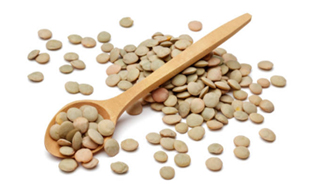
Ingredients:
- ¾ cup dry, small green lentils, picked and rinsed
- 1 ½ tsp salt
- 1 pound rigatoni (or other pasta
of your choosing) - 2 tbsp extra virgin olive oil
- 2 tbsp tomato paste
- 1 medium onion, diced
- 4 garlic cloves, sliced thin
- 28 oz can crushed tomatoes
- 1/4 tsp red pepper flakes
- 5 oz pack baby spinach, rinsed
Directions:
Place lentils in a medium-size sauce pan with at least five cups of water and one teaspoon of salt. Bring to a boil, lower heat to medium and continue cooking at a low boil for 30 minutes or until the lentils are tender, but not mushy.
While lentils are cooking, bring a big pot of water to a boil and cook pasta following the package instructions, reserving about a cup of the cooking water before draining it (remember to generously salt the pasta water).
Heat olive oil in a large, deep non-stick skillet with lid. Add tomato paste and remaining 1/2 teaspoon of salt and cook over medium-high heat for three to five minutes or until the tomato paste starts to caramelize.
Add onions and garlic. Mix well and cook for 10-15 minutes, or until the onions are soft, stirring often.
Add crushed tomatoes and red pepper flakes. Bring to a boil, reduce heat and simmer, covered, for 20 to 25 minutes.
Once the lentils and the pasta are cooked, drain and add them to tomato sauce. Add as much of the reserved pasta water as you want (depending on the consistency of the sauce you prefer), add the spinach and toss well. Continue cooking for 3-5 minutes, until the spinach has wilted.

Reviews Really Matter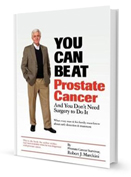
In addition to boosting the book’s Amazon “ranking” to the top of the results on searches for keywords that relate to prostate cancer and proton therapy, they establish the book’s credibility. Everyone looks at reviews on Amazon—and a product that has lots of reviews (and an average rating of 4-5 stars) is perceived as valuable (and more likely to be purchased). Please take a few minutes and post a review of Bob’s book—and don’t forget to rate it from one to five stars!
Most Recent Amazon Review
Below is the book’s most recent Amazon review. Thanks for posting, Ian!

For all men who must confront a prostate cancer diagnosis, this well-researched and thoroughly enlightening book is a must-read. Marckini demystifies this potentially deadly disease, with the self-determination needed to understand the choices that will lead to successful treatment. —Ian Chavez
Buy Bob's book online, in bulk, or in Spanish.
Online: Paperback: $19.00--•--Kindle: $7.99--•--NOOK Book: $9.99--•--Apple iBook: $9.99
In Bulk: Conctact us for a discount price list. Proceeds from book sales support proton therapy research through the Robert J. Marckini Endowed Chair at LLUCC.
In Spanish: Buy the print version or in eBook format.
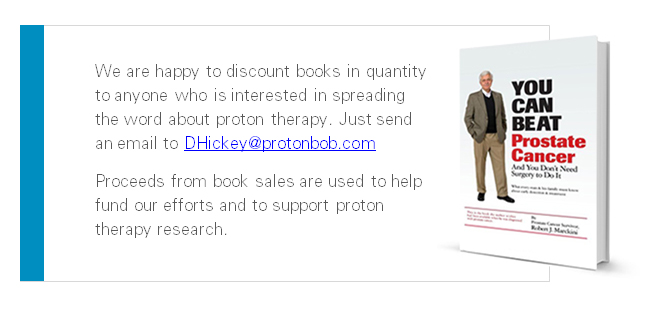

$4,902 a Pound?
Self-described “Tuna King” Kiyoshi Kimura paid a record $3 million for a 612-lb bluefin tuna at the first new year’s auction in Tokyo last month. This is more than double the previous record from that famed auction set in 2013. You have to wonder what the marked-up cost would be for dinner at his Sushi Zanmai restaurant. Incidentally, bluefin tuna normally sells for up to $40 a pound.
Famous Predictions That Were Completely False
It’s impossible to predict exactly what will happen in the future, so why bother? Following are 10 interesting predictions that turned out to be completely wrong. Next month, we’ll give you 10 more.
- “There is not the slightest indication that nuclear energy will ever be obtainable. It would mean that the atom would have to be shattered at will.” ―Albert Einstein, 1932
- “We don’t like their sound and guitar music is on the way out.” —Decca Recording Company on declining to sign the Beatles, 1962
- “This ‘telephone’ has too many shortcomings to be seriously considered as a means of communication. The device is inherently of no value to us.” —Western Union internal memo, 1876
- “Reagan doesn’t have that presidential look.” —United Artists executive after rejecting Reagan as lead in the 1964 film, The Best Man
- “Rail travel at high speed is not possible because passengers, unable to breathe, would die of asphyxia.” —Dr. Dionysius Lardner, 1830
- “I think there’s a world market for maybe five computers.” —Thomas Watson, chairman of IBM, 1943
- “X-rays will prove to be a hoax.” —Lord Kelvin, president of the Royal Society, 1883
- “Everyone acquainted with the subject will recognize it as a conspicuous failure.” —Henry Morton, president of the Stevens Institute of Technology, on Edison’s light bulb, 1880
- “The horse is here to stay, but the automobile is only a novelty—a fad.” —The president of the Michigan Savings Bank advising Henry Ford’s lawyer not to invest in the Ford Motor Co., 1903
- “Television won’t last because people will soon get tired of staring at a plywood box every night.” —Darryl Zanuck, movie producer, 20th Century Fox, 1946
Weather—Did You Know?
Below are 10 more intriguing weather facts (continued from last month):
- The average lifespan of a tornado is less than 15 minutes.
- The U.S. uses an estimated 10 million tons of salt each year to melt ice on its roads.
- A hurricane, a typhoon, and a cyclone are all the same thing. It’s called a cyclone if it occurs in the South Pacific or Indian Ocean, a hurricane if in the North East Pacific or Atlantic Ocean, and a typhoon if it originates in the Northwest Pacific Ocean.
- During its life cycle, a hurricane can expend as much energy as 10,000 nuclear bombs.
- Lightning sets about 10,000 forest fires every year in the U.S.
- If all the ice in the Antarctic melted, the world’s oceans would rise by nearly 220 feet. That’s the height of a 20-story building.
- The driest non-polar desert in the world is the Atacama Desert in South America. It can get as little as 0.06 inches of rain in a year.
- The fastest a rain drop can travel at 18 mph.
- Mawsynram, India is the wettest place on earth. It receives about 36 feet of rainfall every year.
- Every minute over 1 billion tons of rain fall on the Earth’s surface.
Estate Planning Hints
BOB Member Ron Hendricks is Director of Gift Planning for Trinity Western University. He regularly copies us on his “News from Ron” mailings, which are helpful hints on estate planning to his newsletter readers. We’ve found Ron’s suggestions to be timely and beneficial. With his permission we periodically share some of his wisdom with our membership. The following segment is called …
Retirement Income
After working for decades in a small rural town, Patricia was ready to retire. Patricia said, “I bought some stock a number of years ago and overall this was a good investment for me. However, I was uncertain about leaving my savings in the market where I knew it could go up or down.
“I was also looking for security for my retirement years. Ideally, I wanted to know that I would have the income I needed and that it would not change with the markets.”
Patricia talked to a friend who had found a good choice. Her friend had set up a gift annuity with her favorite charity. Patricia thought that perhaps a gift annuity would be helpful for her.
Patricia called and asked about a gift annuity and was pleased to discover that she would receive a good payout (up to 9 percent) based on her age. Plus, there would be a charitable tax deduction and part of the income would be tax-free.
 Patricia transferred her stock for a charitable gift annuity and was delighted with the fixed payment she received. She avoided part of the capital gains tax and her CPA was pleased that her charitable deduction will save taxes this year.
Patricia transferred her stock for a charitable gift annuity and was delighted with the fixed payment she received. She avoided part of the capital gains tax and her CPA was pleased that her charitable deduction will save taxes this year.
With the tax savings and increased income she plans to spend more on her grandchildren this year!
Educate the Guy Behind You in Traffic
 Help us build awareness about proton therapy with a BOB bumper sticker. Think about all the people you could educate during rush hour … or in the parking lot at your local grocery store …
Help us build awareness about proton therapy with a BOB bumper sticker. Think about all the people you could educate during rush hour … or in the parking lot at your local grocery store …
Just send $6.00 to Bob Hawley: P.O. Box 45, Mt. Angel, OR 97362 and he’ll mail you one. Or, email Bob at [email protected].
Proceeds go to the Robert J. Marckini Endowed Chair for proton therapy research at LLUCC.

Last Month’s Brain Teaser
This is an unusual paragraph. I'm curious as to just how quickly you can find out what is so unusual about it. It looks so ordinary and plain that you would think nothing is wrong with it. In fact, nothing is wrong with it! It is highly unusual, though. Study it and think about it, but you still may not find anything odd. But if you work at it a bit, you might find out. Try to do so without any coaching!
Answer: The letter “e,” which is the most common letter used in the English language, does not appear even once in the paragraph.
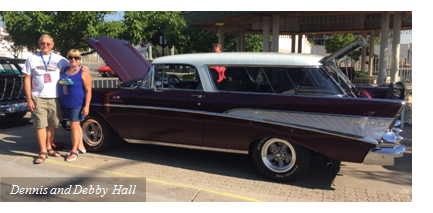 Winner: The February brain teaser winner is BOB member Dennis Hall of Spokane, WA. Dennis was treated with proton therapy for his prostate cancer in 2012 at LLUCC and “can’t say enough” about his experience of treatment. Nearly seven years later, he’s feeling great. In addition to his love of travel (he was on vacation in Arizona when he submitted his brain teaser answer); Dennis is active in his local classic car community. “I’m the proud owner of a ’57 Chevy Nomad wagon,” he said. “We drive this beauty to various shows and love the looks we get.” Dennis said that being cancer free ensures he’ll be able to enjoy his active lifestyle for many years to come.
Winner: The February brain teaser winner is BOB member Dennis Hall of Spokane, WA. Dennis was treated with proton therapy for his prostate cancer in 2012 at LLUCC and “can’t say enough” about his experience of treatment. Nearly seven years later, he’s feeling great. In addition to his love of travel (he was on vacation in Arizona when he submitted his brain teaser answer); Dennis is active in his local classic car community. “I’m the proud owner of a ’57 Chevy Nomad wagon,” he said. “We drive this beauty to various shows and love the looks we get.” Dennis said that being cancer free ensures he’ll be able to enjoy his active lifestyle for many years to come.
Congratulations, Dennis! Your signed copy of Bob’s book is on the way.
New Brain Teaser
Say a man buys his wife a ring for $60, then changes his mind and sells it for $70, then changes his mind again and buys it back for $80, then changes his mind again and sells it for $90. What is his profit, if any?
For a good mental exercise, try solving this in your head!
Send your answer to [email protected] for a chance to win a signed copy of Bob Marckini’s book, You Can Beat Prostate Cancer.
The Honest Husband
A wife asked her husband: “What do you like best about me—my pretty face or my incredible figure?” He looked at her from head to toe and replied: “Your sense of humor.”
My Resume
My first job was working in an orange juice factory, but I got canned ... I couldn’t concentrate.
Then I worked in the woods as a lumberjack, but I just couldn’t hack it, so they gave me the ax.
After that I tried to be a tailor, but I just wasn’t suited for it … mainly because it was a sew-sew job.
Next I tried working in a muffler factory, but that was exhausting.
Then I tried to be a chef. I figured it would add a little spice too my life, but I just didn’t have the thyme.
I attempted to be a deli worker, but any way I sliced it, I couldn’t cut the mustard.
I studied a long time to become a doctor, but I didn’t have any patients.
I became a professional fisherman, but discovered I couldn’t live on my net income.
I managed to get a good job working for a pool maintenance company, but the work was too draining.
So then I applied to work at a gym, but they said I wasn’t fit for the job.
After many years of trying to find steady work, I finally got a job as a historian. Then I realized there was no future in it.
So I retired and I found I’m perfect for the job.
Hard of Hearing
There was an elderly man visiting a doctor for his check-up. As he was leaving he asked the doctor if he could recommend a specialist for his wife. “What’s wrong with her?” asked the doctor. The old man explained that her hearing was getting so bad, it was almost embarrassing. The doctor said he knew of several specialists who could help, but he wanted the old man to do a little test when he got home to help the doctor determine the severity of her hearing loss. The doctor said, “When you get home, make sure your wife’s back is turned to you and ask her a question. If she doesn’t respond, walk closer and ask her again. Keep doing this until she answers and let me know the results.”
That night when the old man opened the door of his home, he could see his wife in the kitchen preparing dinner. She was at the counter with her back to the door. “What’s for dinner?” the old man asked. His wife didn’t respond, so he walked to the doorway of the kitchen and asked the question again. Still, he was greeted with silence. This time he moved right behind her and asked once again, “What’s for dinner?”
His wife spun around, a bit agitated, and said, “For the third time—FRIED CHICKEN!!”
Three Sisters
Three elderly sisters, ages 92, 94 and 96, shared a house together. One evening, the 96-year-old sister went upstairs to take a bath. As she put her foot into the tub, she paused. Then she yelled down to the other two sisters and asked, “Was I getting into the tub or out?”
“You dern fool,” said the 94-year-old. “I’ll come up to check.” When she got half way up the stairs, she paused and shouted out, “Was I going up the stairs or down?”
The 92-year-old sister was sitting at the kitchen table drinking a cup of tea and thought, “I hope I never get that forgetful … knock on wood.” She then shook her head and called out, “I’ll be up to help you both as soon as I see who’s at the door!”
Quote of the Month:
“I turn coal into diamonds, sand into pearls, and a worm into a butterfly. I can turn your life around too!” — God

The Year was 1955 … What were people talking about? Source
Did you hear the post office is thinking about charging seven cents just to mail a letter?
If they raise the minimum wage to $1.00, nobody will be able to hire outside help at the store.
When I first started driving, who would have thought gas would someday cost 25 cents a gallon? Guess we’d be better off leaving the car in the garage.
Did you see that some baseball player just signed a contract for $50,000 a year just to play ball? It wouldn’t surprise me if someday they’ll be making more than the president.
I never thought I’d see the day all our kitchen appliances would be electric. They’re even making electric typewriters now.
I’m afraid the Volkswagen car is going to open the door to a whole lot of foreign business.
Thank goodness I won’t live to see the day when the government takes half our income in taxes. I sometimes wonder if we are electing the best people to government.
The fast-food restaurant is convenient for a quick meal, but I seriously doubt they will ever catch on.
There’s no sense going on short trips anymore for a weekend—it costs nearly $2.00 a night to stay in a hotel.
No one can afford to be sick anymore. At $15.00 a day in the hospital, it’s too rich for my blood.
If they think I’ll pay 30 cents for a haircut, forget it.
Low PSAs to all,
Bob Marckini and Deb Hickey
To print the BOB Tales newsletter or view the newsletter with a larger font size, click here for the PDF file.
NO MEDICAL ADVICE: Material appearing here represents opinions offered by non-medically-trained laypersons. Comments shown here should NEVER be interpreted as specific medical advice and must be used only as background information when consulting with a qualified medical professional.
